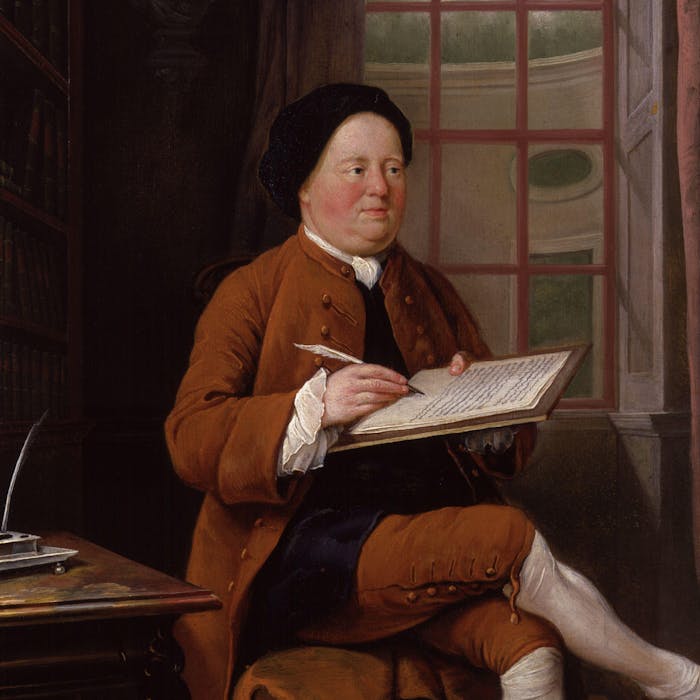
Samuel Richardson
Samuel Richardson was an English writer and printer. Writing in the mid 1700s, he is regarded as one of the most important innovators of the novel form.
Born in Derbyshire in 1689, Samuel Richardson chose to be apprenticed to a printer in London, as he enjoyed reading. Details of his background are unclear, but his family were not rich, and their financial turbulence and insecurity probably gave Richardson the imaginative sympathy with people of all walks of life that he later demonstrated as a writer. (Charles Dickens had a similar start in life.)
In time, Richardson was able to set up his own printing shop, married the daughter of his former boss, and was able to take on apprentices of his own. His family life was not without its vicissitudes, however - five of his six children died, as did his wife, after 10 years of marriage.
Richardson married a second time and had another six children, four of which reached adulthood.
Meanwhile, Richardson's profession brought him into contact with writers, thinkers and political firebrands of the day - including Philip Wharton, 1st Duke of Wharton, a Jacobite politician whose libertine characteristics influenced the character of Lovelace in Richardson's novel Clarissa.
Richardson wrote his first novel Pamela at the age of 51. Written as a series of letters, the novel follows the travails of a young, virtuous maidservant as she seeks to fend off and then reform her rakish employer. Richardson’s novel was a sensation, and it was unusual for the time in focusing on the inner life and moral principles of a protagonist who is not only female, but very young and from a modest background.
In his monumental second novel, Clarissa, which was published in several volumes from 1747–48, Richardson honed his stylistic focus on the complex inner life of his characters, especially the virtuous Clarissa Harlow and the unreformed libertine, Robert Lovelace. The drawn-out serialisation of Clarissa allowed Richardson’s readers to imagine themselves as engaged in the writing process, penning fan letters to him that begged the author to write a happy ending for the tormented protagonist.
In response to demands that Richardson envision a male character as virtuous as Clarissa or Pamela, Richardson wrote The History of Sir Charles Grandison (1753) in which male moral virtue was lauded.
Samuel Richardson died in 1761 at the age of 71.
Further reading
Links to external websites are not maintained by Bite Sized Britain. They are provided to give users access to additional information. Bite Sized Britain is not responsible for the content of these external websites.
